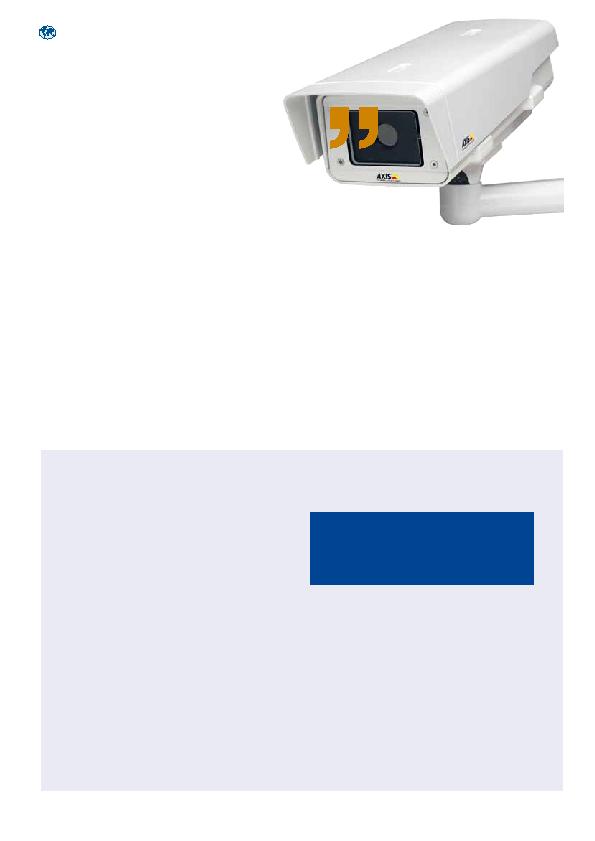
1 0 · d e t e k t o r i n t e r n a t i o n a l
Security News Every Day
www. securityworldhotel.com
video surveillance solutions on
large scale projects.
Some companies are expand-
ing their product range, and
have begun to offer lower priced
entry-level products. These entry
level products would have lower
specifications than some current
products and are expected to be
used to target new end-user mar-
kets, that are not currently being
serviced by thermal cameras.
dynamic pricing
As operations in Iraq and Afghani-
stan reduced and exit strategies
were put in place by the various
allied forces, government funding
for un-cooled thermal cameras for
military applications has slowed,
leaving manufacturing capacity
in excess of military market de-
mand. This has caused companies
such as DRS Technologies and
MOOG, that have strong military
connections, to offer much less
expensive thermal cameras to the
commercial security market. This
has thrown a new dynamic on the
pricing structure of the thermal
market.
Philippou continues, "How-
ever, the high price decline will
mean that revenue growth will
be limited for the next couple of
years growing, before experienc-
ing increasingly higher growth
over this reports forecast period to
2017."
Un-cooled thermal cameras lend
themselves well to the commercial
security market. They are able to
see in complete darkness, cover
wide areas, are not affected by bad
weather conditions, or altering
light conditions, and are well
suited to video analytics. Despite
this, in previous years, un-cooled
thermal cameras were considered
to be too expensive and saw lim-
ited impact within the commercial
security market. However, this
new report from IHS, identi-
fies that some companies have
reported price drops in excess of
20 percent in recent years, and
that this continued price decline is
expected to make these products
more inviting to the commercial
security market.
The world market for video
surveillance as a service (VS-
aaS) is expected to see average
annual growth of 17 percent
from 2012 to 2017, reaching
nearly $1.3 billion by 2017.
Growth in specific segments of
the market, such as the residen-
tial and small-medium business
(SMB) sectors, is expected to
drive a change in the typical
buying model.
"End users in the residen-
tial and SMB segments, while
interested in a video surveil-
lance system, often are not in a
position to make the signifi-
cant capital outlay required to
purchase hardware upfront,"
said Aaron Dale, analyst for
the Security and Fire group at
IHS. "Inherently, businesses
and consumers prefer to spread
the cost of goods and services
over time."
Popular in China
Including the cost of hardware
in the monthly service fee has
proved particularly popular
with end users in China, a
market that accounted for an
estimated 68 percent of global
revenues last year.
A move toward this type of
billing method could present a
challenge for some video sur-
veillance equipment vendors,
which are used to transac-
tional sales. Even so, many
companies prefer the recurring
monthly revenue model, as
it fosters a more dependable
cash-flow model and has the
potential to generate a larger
profit margin.
"Security systems integra-
tors are uniquely positioned
to capitalise on the growing
popularity of this business
model, as they are used to
billing on a monthly basis.
For their part, both integra-
tors and manufactures could
take advantage of this market
by creating strategic partner-
ships. The integrator provides
a service package, while the
manufacturer benefits from
additional camera sales", Dale
added.
The growing popularity
of hardware-inclusive billing
models, in turn, has the po-
tential to reshape the competi-
tive landscape and spur new
interest in the overall video
surveillance industry.
"There are two major reasons
for the price decline that the
industry is currently experiencing.
These are increased competition,
and new technology develop-
ments," commented Oliver Philip-
pou, report author and market
analyst for video surveillance at
IHS.
Competition
IHS also expects increased com-
petition from new manufacturers
entering the thermal market to
impact prices. Traditional visible
light camera manufacturers are
expected to have new and renewed
interest in the un-cooled thermal
camera market within the next
18 to 24 months. This will allow
these manufacturers to offer total
security
technology market
Thermalcamerashipmentsheatupaspricesmelt
Videosurveillancetotake
inspirationfrommobilephoneindustry
The un-cooled thermal security camera market is
forecast to see high unit shipment growth of 25
percent over the next 5 years, close to twice the
rate of the CCTV and video surveillance market. This
high unit growth is being caused by steep declines
in average selling prices which means thermal cam-
eras are more appealing to the commercial security
sector, according to a new report from IHS.
Much like the mobile phone industry, the video
surveillance industry is turning towards a recur-
ring monthly revenue model that includes the
cost of hardware into a monthly service fee, so
called Security-as-a-Service, according to a new
report from IHS.
There are two major reasons
for the price decline that the
industry is currently experi-
encing. These are increased competition,
and new technology developments.
T
he world market for video surveillance
as a service (VSaaS) is expected to see
average annual growth of 17 percent from
2012 to 2017, reaching nearly $1.3 billion
by 2017.
